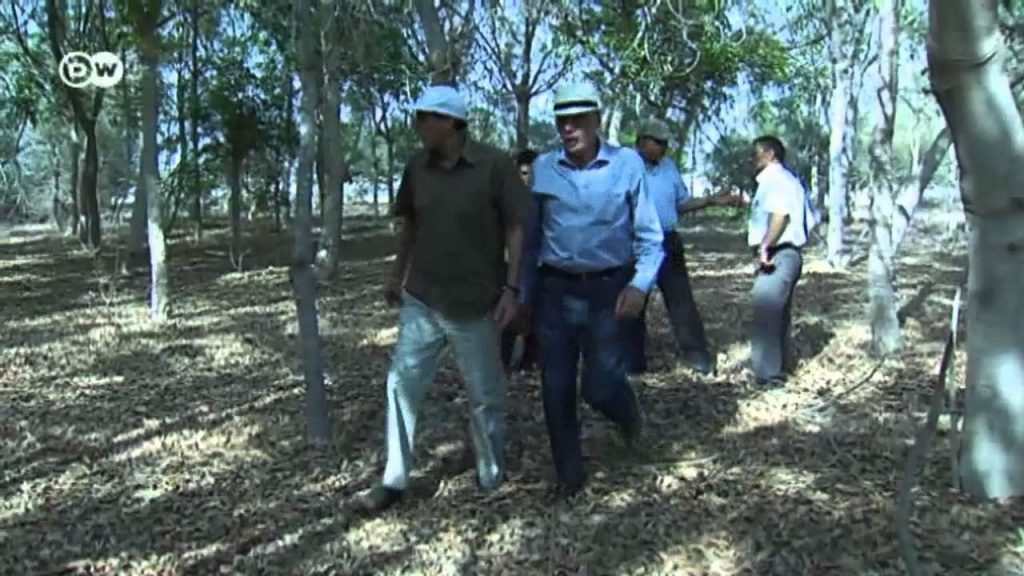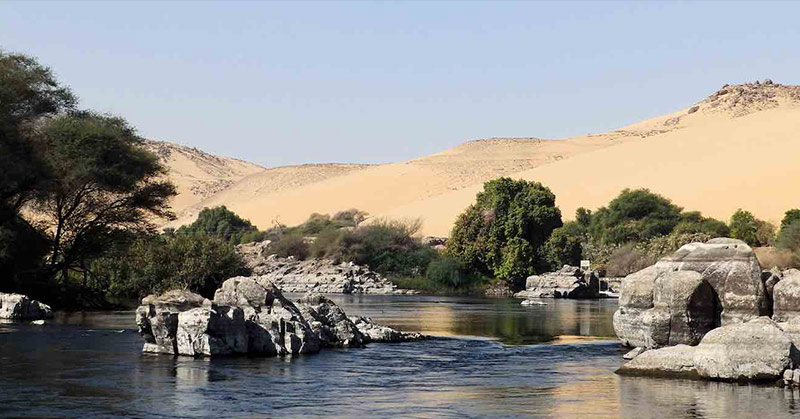This article was originally published on January 7, 2020, and has since been updated.
A great percentage of the lands in northern Africa are afflicted by desertification, a process whereby fertile land becomes a desert as a result of drought, inappropriate agricultural practices or deforestation. There just isn’t enough clean water to reverse this process, and so many of the region’s lands are left to turn arid and go to complete waste.
After Libya, Egypt comes next in line as the country with the most deserts in Africa. The country is made of 90% desert, with about 68% of the landmass covered by grainy sand.
Egyptian scientists have spent decades trying to solve the harrowing problem eating up the freshness of their lands, and 25 years ago, they came up with a simple yet effective solution for afforestation. Treated sewage water. It may sound unreal, but the Serapium Forest in Al Ismailia, 10 miles west of the Suez Canal in Egypt, is all you need to see to have a change of heart [1]. Neatly lined with eucalyptus trees stretching as far as fifty feet high, the 500-mile forest thrives on the nutrients in sewage effluent and the energy from the blazingly hot sun in Egypt. The town of Ismailia is inhabited by 400,000 people who produce sufficient sewage every year.
The process
The forest was cultivated by Egypt’s National Program for the Safe Use of Treated Sewage Water for Afforestation, a 25-year-old organization established primarily to use sewage water to grow forests in the country.
Human feces is rich in nitrogen and phosphorus, even after it’s been treated. The sewage is collected from the storage tanks and sent through pipelines to the purification plant where it undergoes several separation processes. The water is finally pumped with oxygen for re-purification and also to kill off any lingering bacteria.

After sewage water has been treated, it effectively becomes a MiracleGro formula packed with nitrogen and phosphorus, two essential elements in plant fertilizers. The forest is then irrigated with the treated water, and as reported by the scientists, MiracleGro is a superfood for trees.
Another contributing factor to the rapid growth of the trees is Egypt’s melting hot sun, beating down at 2,200-kilowatt-hours per square meter per year. It accelerates the rate of photosynthesis and since the plants have a sufficient supply of water, they do not dry up under the unbearable heat.
The research is being funded by Forest Finance, a German Forest Investment company [2]. They plan to build a plantation on one part of the forest where several other profitable varieties of trees would be planted.
“We see the use of wastewater and desert land as an opportunity to build an economic model for sustainable forestry in arid regions,” says Dirk Walterspacher, MD of Forest Finance. “This is where climate protection, the push back of the desert, wastewater recycling and sustainable forest management interlock.”
Benefits

A major advantage of the Serapium forest and others like it coming up is the reduction in pollution of the Nile River, Egypt’s most important source of water. According to the Egyptian Organization for Human Rights, 4.5 million tons of pollutants which may be treated, partially treated or completely untreated industrial and domestic waste flow into the Nile River every year [3]. Afforestation with the use of wastewater would significantly reduce those figures and improve Egypt’s water quality.
Growing forests would greatly help to slow down the rate of desertification in the country. Where the land is arid and forestry practices are at a major low, every single effort at afforestation goes a long way to revitalize the land. In these areas, the abundance of trees will help to stop erosion, break sand storms, regulate hot temperatures and provide shade and moisture.
“Afforestation with wastewater has great potential,” says Hany El Kateb, a lecturer of forestry science at the Technical University of Munich. “We could provide work in arid regions around the world and give people a reason not to leave. Egypt’s 97 million inhabitants produce seven billion cubic meters of wastewater every year, enough to green 1.6 million acres of desert.”
Trees in the Serapium forest have been a steady source of wood for Egypt in the past few years. However, wood from eucalyptus trees is not fit for many industrial purposes. The forest’s authorities, in collaboration with Forest Finance and the Technical University of Munich, plan to cultivate other varieties of trees to harvest high-quality wood. These species would include teak, mahogany, Jatropha, and Indian rosewood.
Most importantly, trees absorb carbon dioxide and other greenhouse gases causing global warming, replacing them with oxygen and nourishing the environment. The forest’s management plan to include several species of plants and animals for earth-nourishing ecosystems to thrive in the region.
Sources
- Andy Corbley. Scientists Use Recycled Sewage Water to Grow 500-Acre Forest in the Middle of Egyptian Desert. Good News Network. https://www.goodnewsnetwork.org/using-sewage-water-to-grow-trees-in-egyptian-desert/. Retrieved 04-01-2020
- Klaus Sieg. Greening the Desert With Wastewater. Reasons to be Cheerful. https://reasonstobecheerful.world/greening-the-desert-with-wastewater/#. Retrieved 04-01-2020
- Hassan Abdel Zaher. The Nile, a vital source of water, turns into source of disease. The Arab Weekly. https://thearabweekly.com/nile-vital-source-water-turns-source-disease. Retrieved 04-01-2020
- Admin. What is Desertification? Conserve Energy Future. https://www.conserve-energy-future.com/causes-effects-solutions-of-desertification.php. Retrieved 04-01-2020

